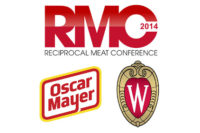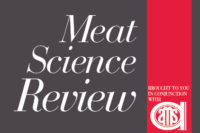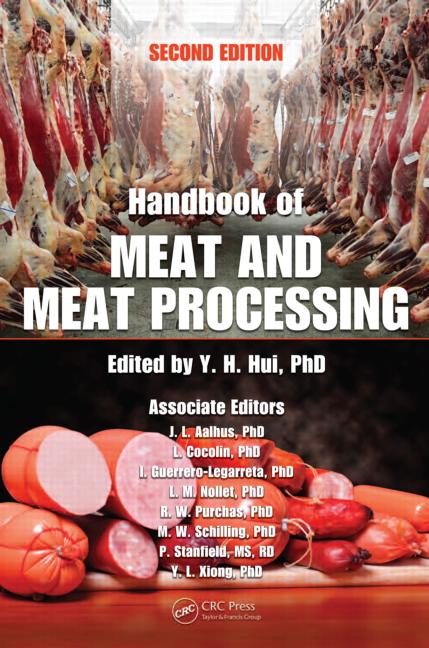Meat Science Review: Guidelines for measuring meat color

 Consumers routinely use product color and appearance to select or reject products, and suppliers of muscle food products must also create and maintain the desired color attributes. The color of muscle foods revolves around myoglobin, the primary red pigment in meat. However, ultimate perceived color is affected by many factors such as species, animal genetics and nutritional background, postmortem changes in muscle (especially the dynamics of pH and meat temperature decline), inter- and intra-muscle effects, postmortem storage temperatures and time, and a whole host of processing (including antimicrobial interventions), packaging, and display and lighting variables.
Consumers routinely use product color and appearance to select or reject products, and suppliers of muscle food products must also create and maintain the desired color attributes. The color of muscle foods revolves around myoglobin, the primary red pigment in meat. However, ultimate perceived color is affected by many factors such as species, animal genetics and nutritional background, postmortem changes in muscle (especially the dynamics of pH and meat temperature decline), inter- and intra-muscle effects, postmortem storage temperatures and time, and a whole host of processing (including antimicrobial interventions), packaging, and display and lighting variables.
Color evaluation is an essential part of meat research, product development and troubleshooting of processing problems. When done properly, both visual and instrumental appraisals of color are powerful and useful research tools for meat scientists.
However, these evaluations must be conducted using carefully designed procedures to avoid artifacts or biased data. Although not everyone needs expert knowledge of myoglobin chemistry, color evaluators should have a general understanding of the biochemical and physical parameters regulating color and color perception.
With all of this in mind, we have put together the “GUIDELINES FOR MEASURING MEAT COLOR” for use in planning and executing investigations involving meat color.
Each section of this expanded and updated guide can be viewed as a “standalone” description of various important factors affecting meat color and color measurement — although a thorough review of the entire set of guidelines is strongly suggested to those new to meat color research.
Users should be able to pick and choose the background information needed to ensure their efforts result in reliable and accurate appraisals of color. Many practical “dos” and “don’ts” for instrumental and visual color measurement should help researchers work through the infinite number of combinations of factors that affect color. Simply put, complete color evaluations usually cannot be done with only one scale, sampling technique or instrumental measurement.
The interaction of myoglobin pigment chemistry with the physics of light absorbance and reflectance becomes rather complicated as it determines a product’s color. Reliable measurements of color and color stability are also complex and often misused in routine work.
Thus, these guidelines provide suggestions for researchers needing to measure color of muscle foods. In some instances, these guidelines can be used as a step-by-step process to appraise color measurement; but for most projects, investigators must integrate the principles detailed in these guidelines into their experimental design to address the specific question of interest.
We hope that this guide will bring some consistency to how research papers report color data. Tapp et al., (2011)[i] reported many inconsistencies and even total omission of protocol that the AMSA Guidelines Committee considers “essential” data in studies using instrumental evaluation of color. Tapp et al.’s survey of 1,068 published (1998 to 2007) manuscripts found that 73.6% of researchers failed to report aperture size, 52.4% number of scans per sample, 48.9% Illuminant used, 65.7% angle of observation, and nearly 3% failed to report the type of instrument used.
Up to 8.4% did not indicate what method they used to calculate their tristimulus values (such as CIE L*,a*,b* versus Hunter L,a,b) by mentioning the universally accepted revisions of the 1976 Commission de Internationale E’ Clairage for the calculation of L*a*b*. Interestingly, only 24.8% of the manuscripts took advantage of the calculated color parameter known as hue angle and 25.5% of saturation index.
Similar inconsistencies likely also exist for the reporting of visual color evaluations. This guide should encourage more uniform reporting of pertinent experimental details and sample properties for studies involving visual and/or instrumental color evaluation.
For more information on GUIDELINES FOR MEASURING MEAT COLOR, e-mail Melvin Hunt at Hhunt@ksu.edu or Andy King at andy.king@ars.usda.gov.
[i] Tapp, W.H. III, Y.W.S. Yancey, & J.K. Apple. (2011). How is the instrumental color of meat measured? Meat Science, 89(1):1-5.
Looking for a reprint of this article?
From high-res PDFs to custom plaques, order your copy today!








